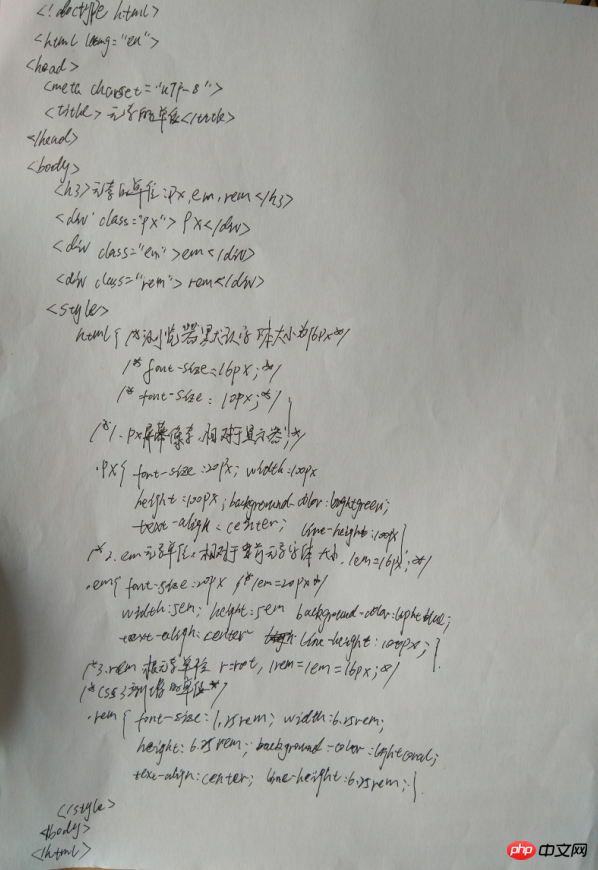代码
实例
<!doctype html>
<html lang="en">
<head>
<meta charset="UTF-8">
<title>常用选择器</title>
<style type="text/css">
/*标签选择器*/
ul{
padding:10px 5px;/*内边距*/
margin:0;/*外边距*/
width:500px;/*设置宽度*/
border:1px dashed #666;/*设置边框*/
}
ul:after { /*子块撑开父块*/
content:''; /*在子元素尾部添加空内容元素*/
display: block; /*并设置为块级显示*/
clear:both; /*清除二边的浮动*/
}
ul li {
list-style: none; /*去掉默认列表项样式*/
float: left; /*向左浮动*/
width: 40px; /*设置宽度*/
height: 40px; /*设置高度*/
line-height: 40px; /*文本垂直居中*/
text-align: center; /*文本水平居中*/
border-radius: 50%; /*设置边框圆角*/
box-shadow: 2px 2px 2px #888;
background: lightgreen; /*淡绿色背景*/
margin-right: 5px; /*设置每个球之间的右外边距*/
}
/*id选择器*/
#item1 {
background-color: blue;
}
/*类选择器*/
.item2 {
background-color:pink;
}
/*属性选择器: 属性名*/
ul li[class] {
background-color: blueviolet;
}
/*属性选择器: 属性值*/
ul li[class="item2"] {
background-color: grey;
}
/*属性选择器: 以cat开头的li*/
ul li[class^="cat"] {
background-color: brown;
}
/*属性选择器: 以pig结束的li*/
ul li[class$="pig"] {
background-color: red;
}
/*属性选择器: 属性值中包含指定子串*/
ul li[class*="te"] {
/*含有te的小球应该会变色,但是第1个小球是id选择器,id选择器优先级大于标签属性选择器,如果改成class选择器就会有效果*/
background-color: green;
}
/*后代选择器,同时可以不要ul效果是一样的*/
body ul li {
border: 1px solid black;
}
/*子选择器,这是选择ul中以pig结尾的li*/
ul > li[class$="pig"] {
background-color: yellow;
}
/*相邻选择器*/
ul li[class$="pig"]~*{ /*选择以pig为结尾的元素之后的所有同级元素*/
font-size:20px;
background-color: black;
color: white;
}
/*选择以pig结尾的相邻的li元素*/
ul li[class$="pig"]+li {
background-color: pink;
color: green;
}
/*群组选择器*/
div,h2{
color:red;
}
/*伪类选择器*/
a{
font-size:40px;
}
/*鼠标悬停时*/
a:hover{
text-decoration:none;
color:pink;
}
/*访问前*/
a:link{
background:black;
}
/*访问后*/
a:visited{
background:green;
}
/*获取焦点时*/
a:focus{
color: white;
}
/*鼠标点击时*/
a:active{
font-size:20px;
}
/*选择集合中的第一个元素*/
ol li:first-child {
color:red;
}
/*选择集合中的最后一个子元素*/
ol li:last-child {
color: green;
}
/*按索引选择第二个*/
ol li:nth-child(2){
background-color: red;
}
/* 选择所有的奇数的元素*/
/* 2n偶数, even偶数, 2n+1奇数, odd奇数*/
ol li:nth-child(2n+1){
background-color: yellow;
}
/*伪类选择器: 根据子元素数量*/
/*选择具有唯一子元素的元素*/
ol:only-child {
background-color: lawngreen;
}
/* 选择指定类型的唯一子元素 */
ol li:only-of-type {
background-color: black;
}
/* 倒数选择指定位置的元素 */
ol li:nth-last-child(5) {
background-color: green;
}
/*选择指定父级的第三个<li>子元素*/
ol li:nth-of-type(3) {
background-color:wheat;
}
/*选择页面中的空元素p*/
:empty {
width: 100px;
height: 100px;
background-color: lightgreen;
}
:empty:after {
content: 'http://www.baidu.com';
}
:empty:before {
content: '请打开链接';
}
</style>
</head>
<body>
<ul>
<li id="item1">1</li> <!-- 设定id选择器 -->
<li class="item2">2</li>
<li class="cat dog pig">3</li>
<li>4</li>
<li>5</li>
<li>6</li>
<li>7</li>
<li>8</li>
<li>9</li>
<li>10</li>
</ul>
<div>他的头发是红棕色的</div>
<h2>他的头发是红棕色的</h2>
<a href="http://www.baidu.com">百度</a>
<ol>
<li>你</li>
<li>我</li>
<li>他</li>
<li>它</li>
</ol>
<br>
<br>
<br>
<br>
<ol>
<li>123</li>
</ol>
<ol>
<li>123</li>
<li>123</li>
<li>123</li>
</ol>
<ol>
<li>1</li>
<li>2</li>
<li>3</li>
<li>4</li>
<li>5</li>
</ol>
<p></p>
</body>
</html>运行实例 »
点击 "运行实例" 按钮查看在线实例
预览图
![1534392582931045.png _M@3O[OQ]_~(K%XVN)[YLJF.png](https://img.php.cn//upload/image/556/461/193/1534392582931045.png) 手写代码
手写代码

手抄的主要是常用元素的单位,这样对于三个常用单位记得更加清晰,知道了px是相对于当前显示器,em相对于当前元素或父元素字体大小,rem相对于根元素html字体大小
总结:
主要学习了表单,表单的引用,常用的元素单位,常用的选择器,样式的继承,样式冲突的处理,以及应用的案例
1、px是相对于当前显示器,em相对于当前元素或父元素字体大小,rem相对于根元素html字体大小
2、对于表单的理解更加深刻
3、在发生样式冲突时,知道改什么处理,了解了内部、外部、内联的优先级
4、一些常用选择器的应用更加熟悉

